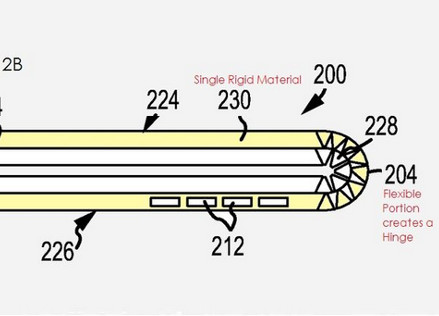Samsung heads into CES 2026 with momentum Samsung Electronics is closing out 2025 with a strong signal of where its future tech ambitions lie….
Apple experimenting with ‘revolutionary flexible material’ for future MacBooks


As reported by Patently Apple, today the US Patent & Trademark Office just published a new Apple patent that details how the company can further improve on its clean design aesthetics by using a “revolutionary flex material.” There are illustrations demonstrating future MacBooks incorporating this mysterious enclosure but the material could also be applied to other devices such as smartphones, tablets, iWatches and other peripheral devices.
Think about the MacBook without hinges connecting the screen display with the other half of the body. Instead, there’s a strong flexible material to allow the MacBook to bend and function as a hinge. No gaps, just one smooth flexible design.

While the whole MacBook is illustrated as being covered by this single material, the flexible portion or connect (where the hinge gets replaced) is made up of a bunch of cubes or cylinders evenly spaced apart. “The flex apertures are defined by interlocking features of the rigid material, the interlocking features are adjacent to each other and spaced apart from one another by the flex apertures.”
The material could be used for anything that requires flexibility and peripheral devices such as keyboards, mice, connection cables or cords, etc. Furthermore, the method may be used to create an armband to support an electronic device such as the rumoured iWatch or other random things like garage doors, straps, handles, cases, bags, electronic reading devices, shades or blinds.
Shown in other illustrations, the material is incorporated into the design of what looks to be Apple EarPods and iPad Smart Cover. You can see the smart cover being able to be rolled up like a pancake to create a stand. The material could reduce the overall size of Apple’s design products and could further bring us closer to the iWatch.

